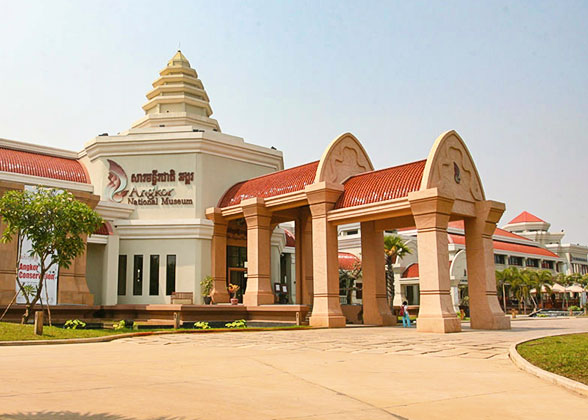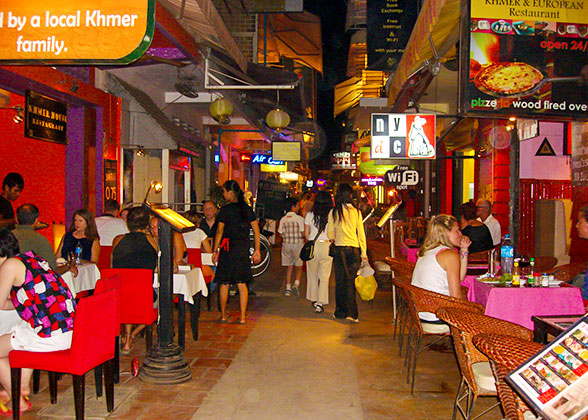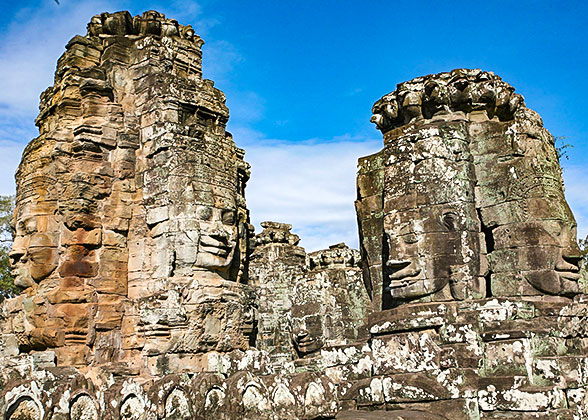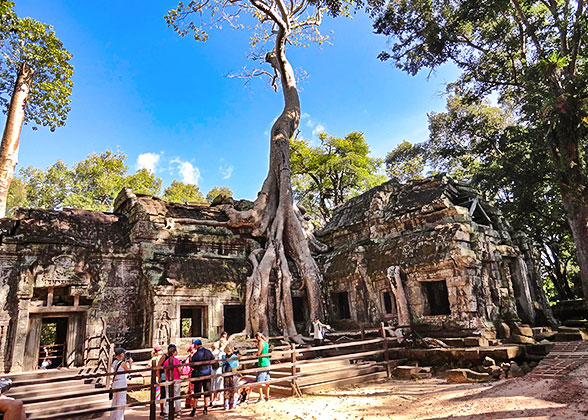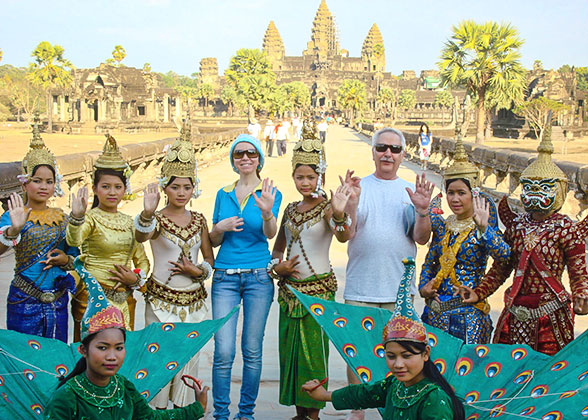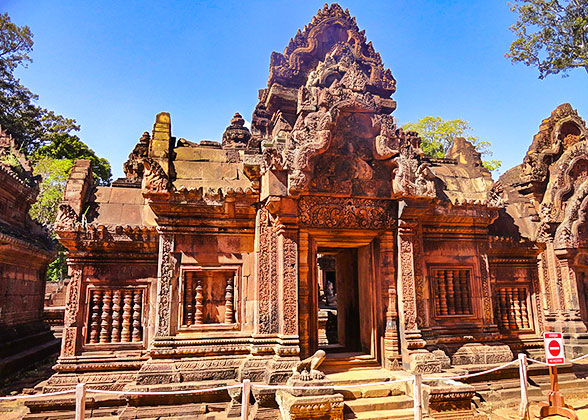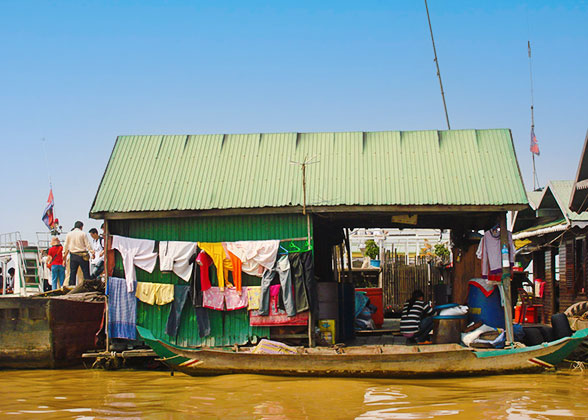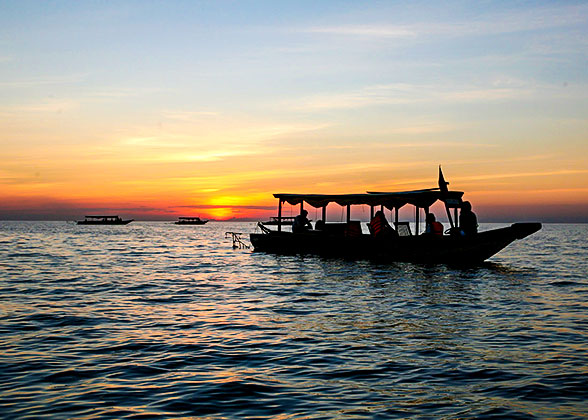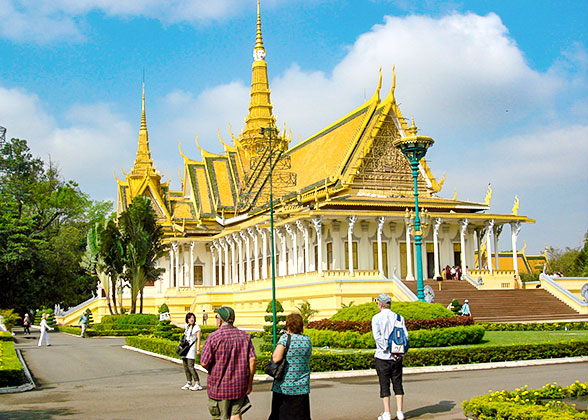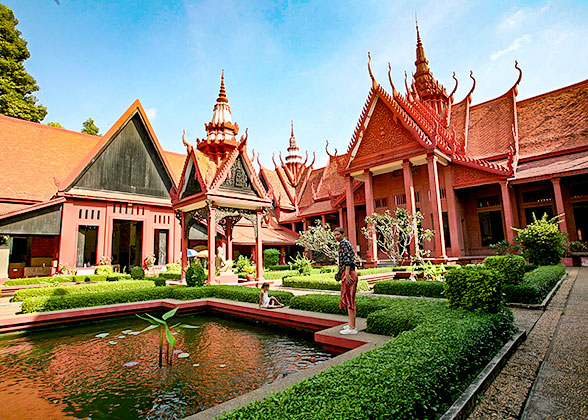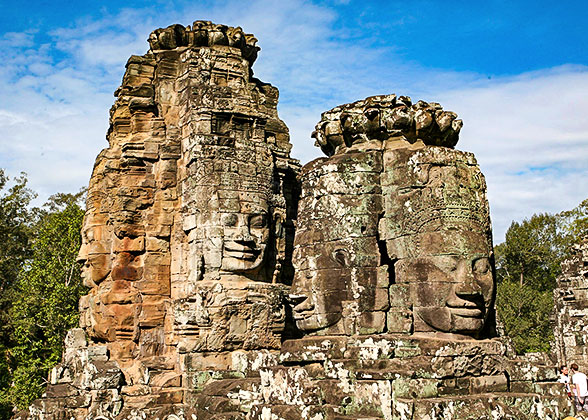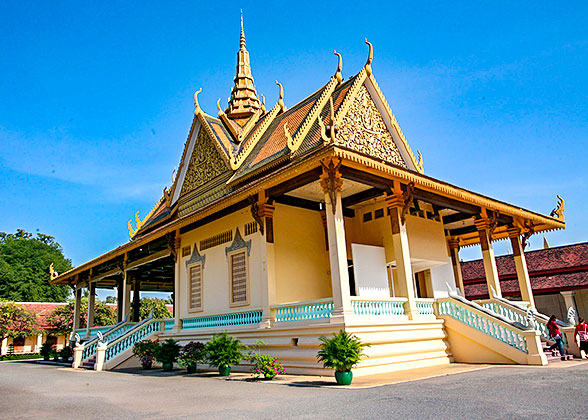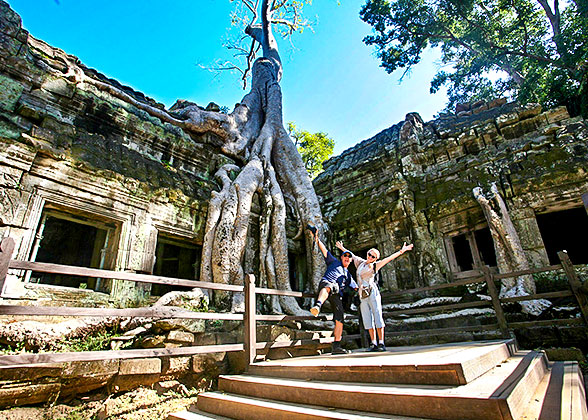Today, we will take you to visit the historical sites of the Angkor Ruins, which would be the most splendid part of your trip. First, we will proceed to
Angkor Thom, the last and most enduring capital city of the Khmer Empire (802-1431), which is surrounded by a moat. There is a stone bridge standing on the moat out of its grand South Gate. The busts on one side of the bridge represent Gods while busts on the other side symbolize Demons. When you enter the South Gate, the
Bayon Temple will come into your sight. This temple is well-known for its mysterious smiling faces, which were carved on four sides of the Buddhist towers. Altogether there are 54 towers and 216 gigantic faces. Facing those smiling faces, many people have a question in mind: who was the owner of this smile when it was carved over one thousand years ago? Was it carved by a highly respected Bodhisattva image in Mahayana Buddhism, or by the image of a special person in Cambodian history? Following the guide to discover it.
Next, we will accompany you to visit the
Baphuon Temple, a pyramid temple-mountain, which is known as the world’s largest and most complex three-dimensional building. Not too many tourists in this site, but it is a place loved by photographers. To travel around this place and experience its spectacular vistas, you need to walk up and down along narrow and steep wooden stairs. But believe us that it will be unexpected surprise in your Angkor Wat tour. To ascend this temple, proper attire is required. Shoulders and knees should be covered. Then the
Terrace of the Elephants featuring typical 3D carvings of elephants will be the last stop of your morning sightseeing.
In the afternoon, we will visit the
Ta Prohm Temple, the shooting site of the movie
Tomb Raider. This distinctive temple standing among the towering green trees brims with the breath of life. Our experienced guide will lead you to enter this temple from east gate and exit from west gate. This way, you can see the Dancers’ Gallery with Apsara reliefs on the way.
Afterwards, we will come to the
Temple of Angkor Wat, the best-preserved temple in Angkor complex. This typical Khmer building is known for its exquisite bas-reliefs and the Indian mythology is expressed vividly and fully here. The history of the Angkor Wat, Hinduism, and Buddhism can all be learnt from this site. Many of the stories described by the reliefs are out of the two classic Hindu epics
Mahabharata and Ramayan. If you are interested, you can read the general plot of these two books in advance, so that when you visit, it will be easier for you to tell which part of the story the relief corresponds to the content of the book. We will visit this temple till around 17:00, when you will enjoy a fantastic view of the golden Angkor Ruins under sunset.
Since you have admired the bas-reliefs of the Apsara dancing in temple sites, tonight, we will arrange for you to watch a high-quality Khmer classical
Apsara Dance Show, which will make your trip more perfect. Dinner will served on show. Apsara dance, known for its elegant gestures and colorful costumes, has been performed for thousands of years. The dance mainly shows the stories of the ancient mythological creatures and the gods of the Khmer Empire. In 2003, Khmer Apsara dance was included in the Intangible Cultural Heritage List by UNESCO. After that, we will drive you back to hotel.
Meals: Breakfast, Lunch, Apsara Dinner Show

